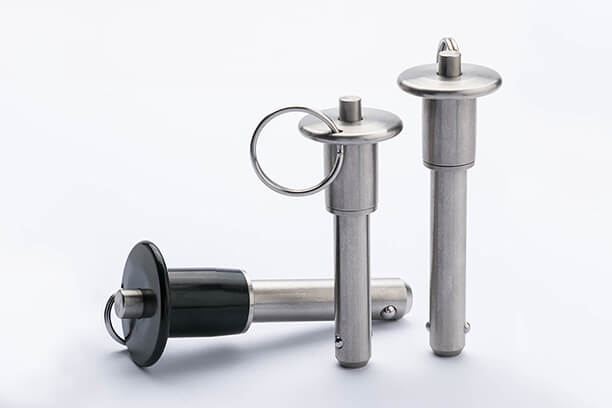Quick release pins are fastening devices equipped with a mechanism that facilitates quick and easy pin release, commonly employed in hardware such as machinery, electronics, and vehicles. They provide a simple and efficient means to both secure and release machinery parts. Quick release pins play a vital role in numerous industries and are frequently used in applications requiring frequent access or where easy disassembly is crucial for maintenance or repair tasks.
There is a diverse range of handle or head styles and materials available for quick release pins. The selection of a handle type depends on the specific requirements of your application. For example, the button handle is ideal for use in confined and restricted spaces around the handle.
To help determine the most suitable quick release pin for your applications or projects, this article aims to give insight into the function, classification, and typical handle or head types of quick release pins, as well as some tips when choosing from them.
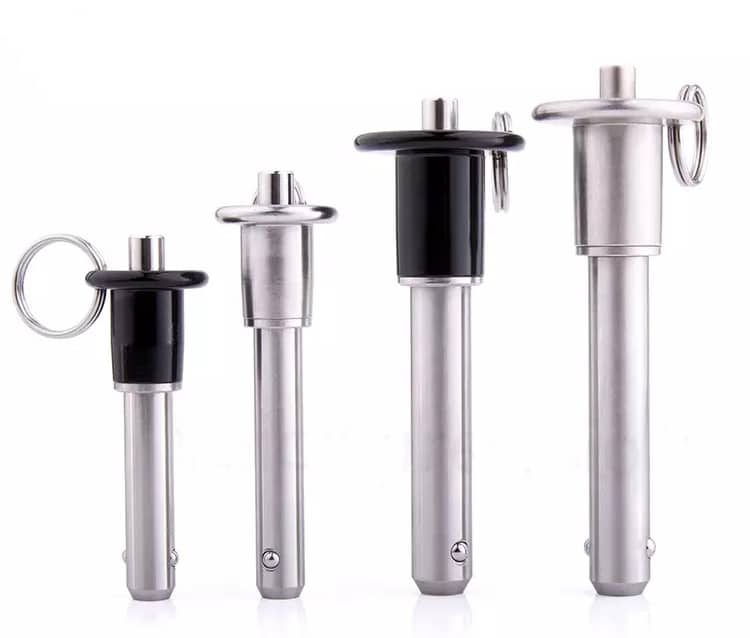
What are Quick Release Pins?
Quick Release Pins, also referred to as ball lock pins, locking pins, or safety pins, have a wide range of applications. They are used for fixing, locking, connecting, adjusting, and facilitating rapid positional changes.
These pins provide a dependable and secure locking function when paired with a receiver plate. This design ensures ease of use and facilitates quick part changeover and replacement as required.
Quick release pins are highly resistant to shearing, corrosion, and wear. This makes them well-suited for applications that require frequent, rapid, and manual assembly and disassembly of products.
How Does a Quick Release Pin Work?
The operation of quick-release pins provides a simple and effective way to secure and release machinery components. Once inserted, these pins effectively hold the respective part in place. To release the part, one can simply remove the quick-release pin.
Upon insertion, a spring-loaded ball extends from the pin shaft into a hole or detent, effectively locking the pin in place.
Releasing the pin requires the user to depress a button located on the top of the handle. This action relieves the spring pressure that holds the pin in place, enabling its removal.
In contrast, quick-release pins that lack a button mechanism can be extracted with a simple pulling motion.
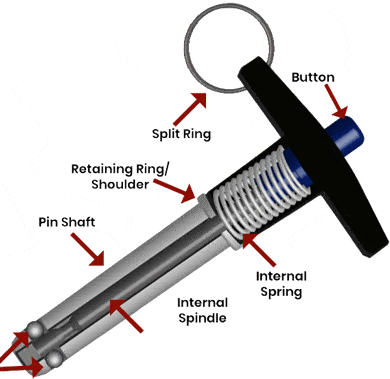
Classification of Quick Release Pin
Mainly used for quick manual assembly and disassembly, quick-release pins employ a mechanism for locking. Inserting the pin into a hole will secure the relevant part. They employ a clearance fit in holes created to nominal diameters and can be categorized into two main types:
- Push-pull Pins
- Positive-locking Pins
Below, we will explain each type:
Push-pull Pins
Push-pull pins consist of a solid or hollow shank that houses a detent assembly in the form of a locking lug, button, or ball, supported by a resilient core, plug, or spring.
These pins are manufactured 0.002 to 0.004 inches undersized to fit standard holes drilled to nominal diameter dimensions. Pullout loads are likely to decrease with increased looseness of fit. It is recommended to deburr or slightly chamfer the hole edges to facilitate assembly.
The main purpose of these pins is to secure parts under shear loading. Ideally, the load direction should be perpendicular to the shank of the pin. The locking mechanisms are designed to ensure secure retention against accidental disassembly. These pins are not suitable for loads in tension.
Positive-locking Pins
Positive-locking pins feature a locking action typically independent of insertion and removal forces. These pins are primarily suitable for shear-load applications, and can tolerate some tension loading without affecting their function.
Positive-locking pins are categorized into three groups:
- Single-acting Pins
- Double-acting Pins
- Heavy-duty Cotter Pins
Single-acting Pins
Single-acting pins feature a locking action controlled by a plunger-actuated locking mechanism. In the locked position, the locking element extends beyond the surface of the pin shank, ensuring a secure lock. Moving the plunger using a button or lever assembly at one end of the pin causes the retraction of the locking element. Various head styles and release mechanisms have been designed for these pins.
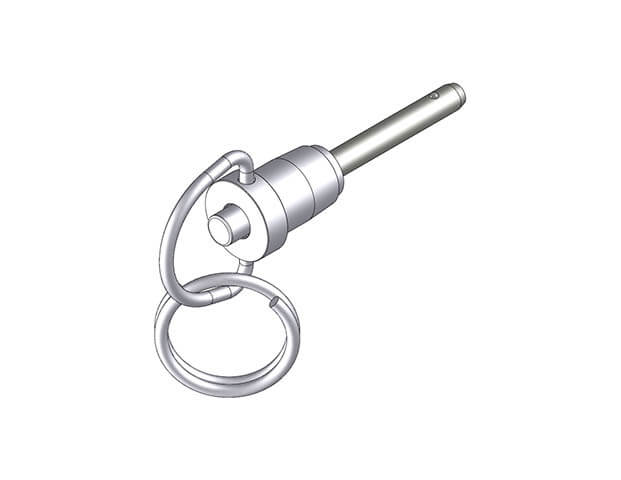
Double-acting Pins
Double-acting pins are a variation of single-action types and feature a bidirectional plunger located by a spring. The movement of the plunger in either direction releases the locking balls.
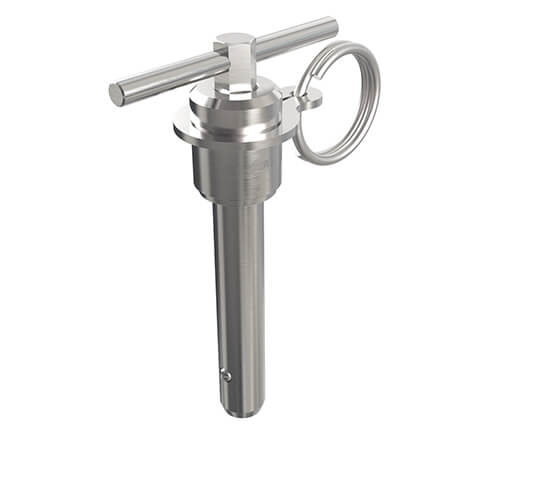
Heavy-duty Cotter Pins
Heavy-duty cotter pins use a forged, high-carbon steel body to substitute the traditional split-cotter design. The locking mechanism is facilitated by a tempered-steel snap ring positioned on the head of the pin.
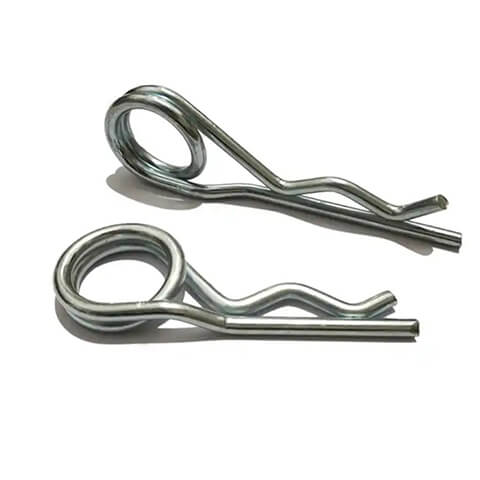
Head and Handle Styles of Quick Release Pins
Quick-release pins typically feature a pin and a handle, and they come in a variety of handle styles. As a result, they can also be categorized based on head/handle type:
- T-handle Quick Release Pins
- Ring-handle Quick Release Pins
- L-handle Quick Release Pins
- Button-handle Quick Release Pins
- Double-acting Quick Release Pins
- Lifting Pins
T-handle Quick Release Pins
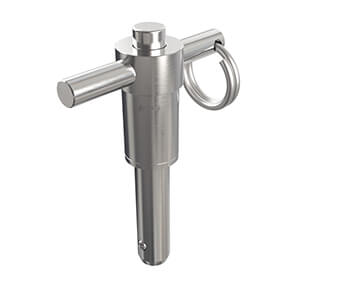
The most prevalent type of quick release pin is the T-handle variety, distinguished by its T-shaped handle which facilitates a secure grip and simple operation. Pulling and gripping the handle allows for effortless release of the connected parts.
Ring-handle Quick Release Pins
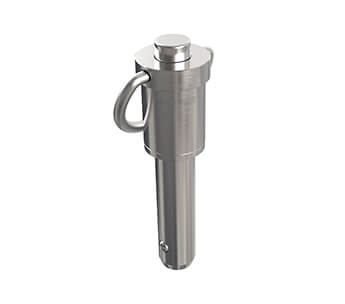
Ring-handle quick release pins are identifiable by their ring-shaped handles positioned atop the pin. Pulling the ring will remove the pin from the hole, subsequently releasing the connected part. While lacking the grip of a T-handle, ring-handle pins have a smaller footprint and require less space, making them suitable for applications that do not require frequent machinery adjustments.
L-handle Quick Release Pins
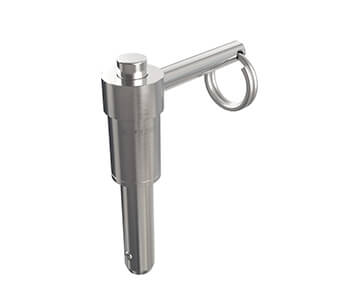
L-handle quick release pins serve as a compromise between ring and T-handle variations. Featuring an L-shaped handle, the release mechanism is situated only on one side of the pin. These are suitable for applications requiring a secure grip, but where space limitations make T-handles impractical.
Button-handle Quick Release Pins
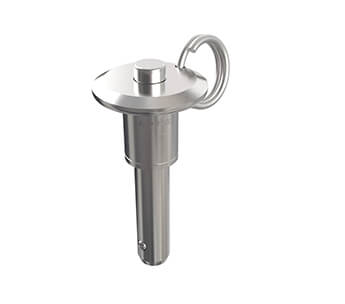
In some instances, quick release pins incorporate a button on the handle. Referred to as button-handle quick release pins, these are engineered to release the connected parts upon pressing the button. When inserted into a hole, button-handle quick release pins lock in place and remain secured until the button is depressed, enabling the pin to be removed from the hole.
Double-acting Quick Release Pins
Double-acting quick release pins come in Ring, T-Shaped, or L-Shaped handles, the selection of which depends on the specific requirements of the application. These handle types are widely used across various industries such as automotive, farm, and construction equipment.
Lifting Pins
Lifting Pins represent a robust category within ball lock pins. This particular type features a single-piece body and incorporates four balls to facilitate the lifting of high-tension loads. The positive locking nature of this pin remains in place until released by pressing the button located on top of the shaft.
Tips for Choosing Quick Release Pins
When selecting quick release pins, it is important to consider the type of handle. These pins may feature a T-shaped or ring handle, with some also incorporating a button mechanism.
The size of quick release pins can vary significantly. It is essential to consider the diameter and width of the handle, as well as the overall length of the pin.
Quick-release pins are often constructed from various materials, with stainless steel being a common choice due to its enhanced strength, durability, and resistance to corrosion compared to materials like aluminum.
Heavy-duty quick release pins are often available in a range of finishes, which help safeguard the metal from potential damage.
FAQs
Efficient and Reliable Fastening Solutions Provided by Runsom Precision
The rapid and simple positive engagement provided by our quick-release pins, along with their exceptional holding strength, caters to applications requiring frequent and repetitive usage. We also provide heavy-duty and marine variations to address a wide range of needs.
Explore our custom CNC machining services and surface finishing options, designed to manufacture precise products that align with your specific application requirements.
About our quick-release pins machining capabilities, request an instant quote to learn more.
Other Articles You May Be Interested in:

